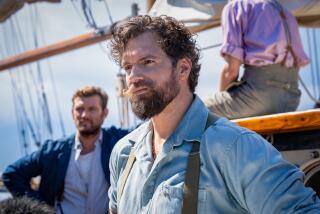Guns Along the Donau, Dunaj, Duna, Dunav, Dunarea : NIGHT SOLDIERS <i> by Alan Furst (Houghton Mifflin: $18.95; 437 pp.) </i>
- Share via
The contemporary espionage novel has by and large drawn its intrigues, its moles, and its endgames from either the Cold War or the Middle East. This is not simply because there is ready material at hand, but because the genre operates best under the umbrella of historical stalemates: The intractability of a conflict at once imparts to the reader a desire for its resolution and allows him or her the pleasure of having that desire frustrated by Byzantine circumstance.
Having accepted, anticipated and enjoyed this frustration, the reader can then be satiated by the artful confluence of lesser and apparently diverse subplots. It is a tight, exacting genre that seems to work best within the confines of at least partially familiar terrains.
In “Night Soldiers,” Alan Furst, much to his credit, tries to stretch the conventions of time, place and conflict that now dominate the genre. Thus we begin not in Berlin or London, but on the banks of the Bulgarian Danube. The action unfolds not in the 1950s and ‘60s, but in the 1930s and ‘40s when the conventional two-sided struggle between East and West is complicated by the machinations of the Nazi state. And throughout, the story is laced with historical detail, irony and thumbnail bios of various figures of the period. Clearly, Furst is fascinated by the ‘30s and wants to show that it is here, before the war, that the modern lingua franca of diplomatic duplicity and international terror comes into its own.
The novel’s opening is compelling. A young Bulgarian peasant, Khristo, is recruited by the Soviet intelligence service (NKVD) after his brother is beaten to death for laughing at the potbellied strutting of the local fascists.
In Moscow, he proves himself adept in the arts of espionage, becoming the star pupil in a class of other Eastern Europeans. Here we also meet Kulic, a stalwart Yugoslav skilled in partisan warfare; Ilya, a Romanian Jew with a talent for survival; Voluta, a young Pole whose gracious felicity leaves him largely unnoticed; and Sacha Vonets, Khristo’s aristocratic, and Russian, father-spy.
In the final phase of the training, however, when the Soviet masters set groups of the novices against one another to prove their mettle, Khristo’s team is robbed of its rightful victory. The youths are at once initiated into the fickle ways of the NKVD and bonded into a group whose peculiar loyalties provide the web around which the rest of the novel is spun. The diverse fates of the leading members of the original team converge, true to the genre, at the end of the novel on the banks of the Danube.
But for the most part we follow Khristo. He is in Spain with Vonets, alternately, and without conviction, aiding and subverting the Republican struggle against Franco. He is in Paris on the run from the NKVD, in love and working as a high-society waiter. He is in prison after being forced back into service by his fascist Bulgarian patron, and then framed, out of spite, by the Brits. And he is, by 1943, with the French Resistance sabotaging trains under the command of a young American sent over by the OSS.
Through it all, Furst regales us with a panoply of secondary characters, subplots and digressions in a novel that becomes picaresque when, for example, a French john, his amours interrupted by the arrival of a wounded Maquis, refuses the return of his fee with the indignant exclamation, “Never, this is for the good of France.”
Furst writes well enough, and he keeps the reader tagging along with his historical spice: a description of Stalin’s midnight bacchanals, an excursion into the unlikely composition of the OSS, or an exegesis on how the design of the Sten gun forced its wielder into close contact with his foe. In the process, unfortunately, he loses the tension necessary to sustain a thriller, while also failing to provide enough internal characterization of Khristo or anybody else to make up for the loss. Thus, as the novel floats down the Danube to its conclusion, one is left wondering whether Furst’s combination of an espionage thriller with a larger consideration of the 1930s has really quite worked after all. Like the river, the book has run a little too long and through a few too many places.
More to Read
Sign up for our Book Club newsletter
Get the latest news, events and more from the Los Angeles Times Book Club, and help us get L.A. reading and talking.
You may occasionally receive promotional content from the Los Angeles Times.










